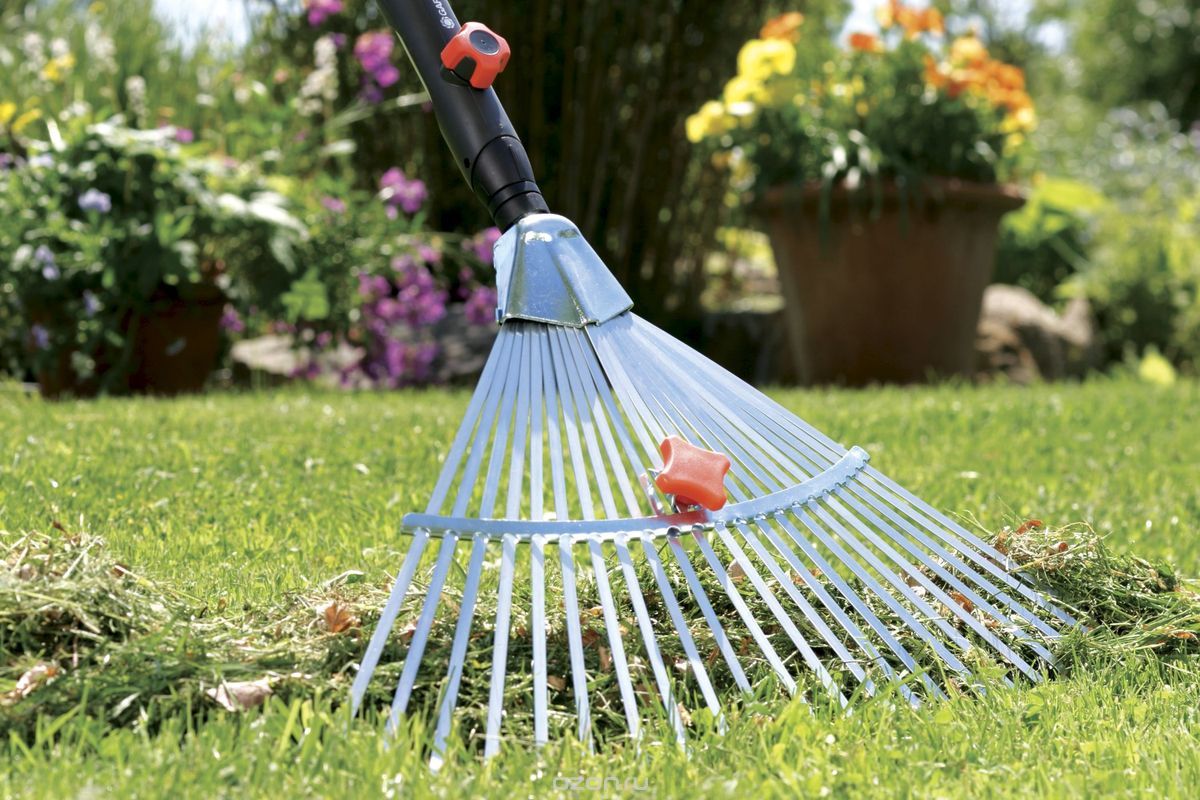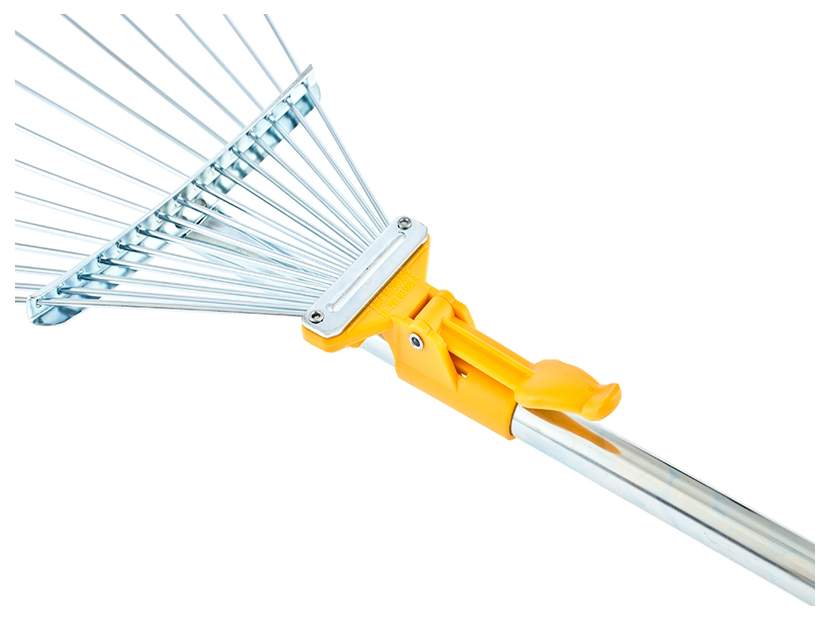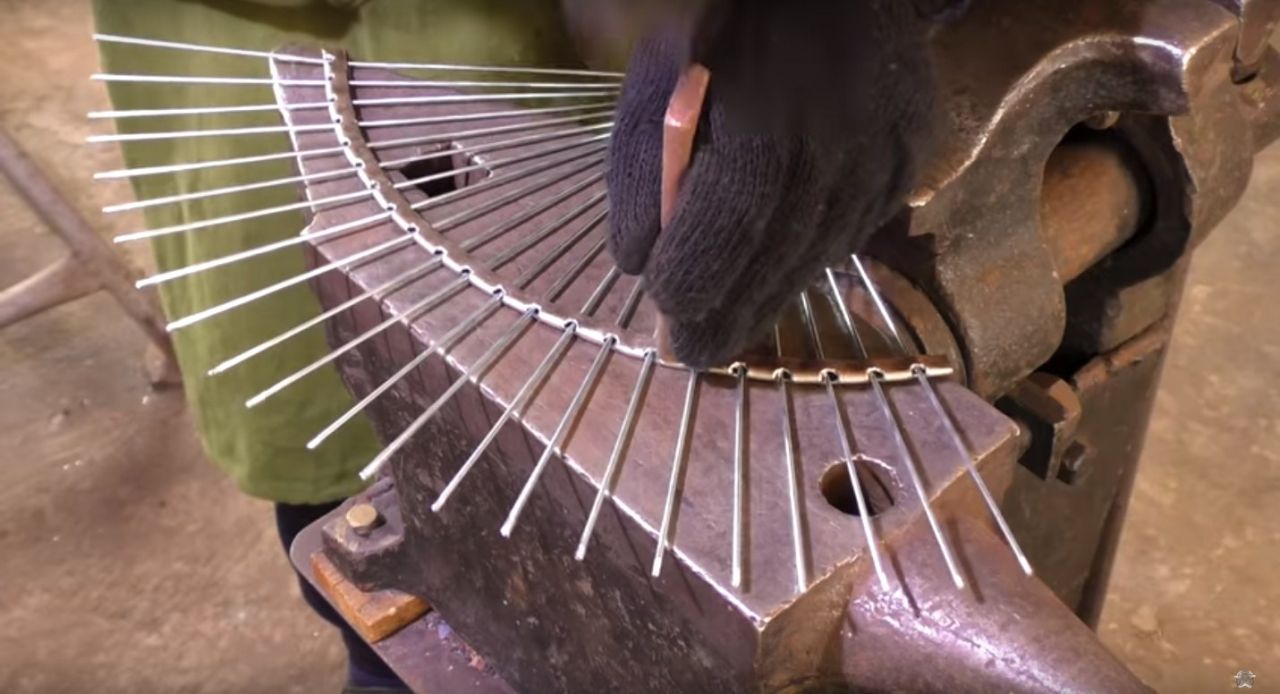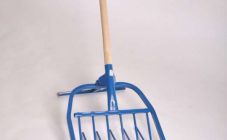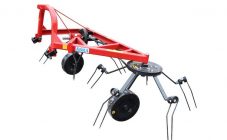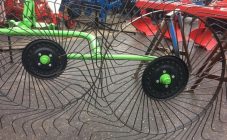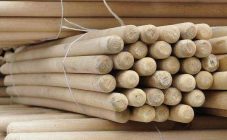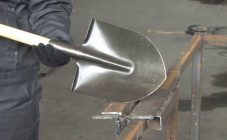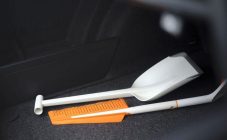The owner of a suburban real estate must have a garden tool on the farm. Without it, it is difficult to keep the garden plot in order and take care of the plants planted on it. One of these tools is a fan rake. It is worth figuring out how to choose the right rake, what to pay special attention to when buying, how to make them yourself.
Features of the choice of fan rake
The main purpose of this type of tool is to collect debris and fallen leaves, not only on flat areas, but also in hard-to-reach places. A distinctive feature of garden fan rakes is the shape of their nozzle, which looks like a fan.
Modern manufacturers offer 2 main types of rakes: wire (bar) and plate. According to the type of material used, these 2 types can be conditionally divided into plastic and metal rakes.
The functionality of the instrument depends on the following factors:
- fan type;
- the size of the teeth;
- the ability to adjust the angle of capture.
As for wire rakes, their teeth are made of thick and strong wire. To extend the service life of the tool, the surface of the rods is covered with a polymer layer. This rake is convenient to use for cleaning flat surfaces with small vegetation. According to the technical specification, the teeth in them are located at an angle of 90 degrees. Thanks to this, a high hook rate is provided, which allows them to be used for collecting small branches and dense debris.
For fan rakes with a lamellar base, the fan is made of plates with high elasticity. They are ideal for cleaning areas located on a multi-level area, as they repeat all its irregularities. Even with increasing load on the fan, they do not deform.
The fan can also be made of plastic. The plastic rake is not functional or durable, but it is quite light. The plastic fan does not damage plants when picking up small debris. For hay, a plastic rake is the ideal tool.
The possibility of purchasing a flat fan rake with a compensator is not excluded. Spring steel is used in the manufacture of teeth. The peculiarity is the presence of a strong compensator plate, which prevents the steel teeth from breaking, prolonging the life of the reinforced metal fan rake.
As a rule, gardeners buy a garden fan rake with a shank. The material used for making the handle and its length are factors that determine the functionality and ease of use with the rake. If the handle is too long or too short, it will be very inconvenient to work with the tool. The most optimal length is when the stalk reaches the person's armpits.
You can also use wood to make the handle of a fan rake. Each species has certain properties and characteristics, for example:
- Birch tree. Inexpensive and easy to process material. It has a high strength under high loads. Suitable for use on hard soils.
- Pine. It is easy to process, grind and remove irregularities, has an attractive appearance.Among the disadvantages, one can single out the fact that with too much load, the handle can break.
- Oak. A distinctive feature of the handle made of this material is a high strength indicator and an extensive area of use.
The type of working handle depends on the type of material used to make the handle.
A fan rake with a telescopic handle is considered extremely convenient. Their practicality lies in the fact that by means of a special mechanism, a person has the ability to adjust the length of the handle. Such a tool is not only functional in operation, but also convenient for storage and transportation.
If the garden fan rake is chosen correctly, they will serve for a long time on the farm. For this, experts recommend taking into account the following criteria:
- type of terrain - park, garden, vegetable garden;
- the type of debris that the tool will be used to clean;
- load level - often or seasonally.
DIY making
A fan rake can be done by yourself. For this, the necessary and high-quality material should be prepared. It is important to firmly and correctly fix all parts of the tool, which will ensure its reliability when the load increases. It is recommended to adhere to the following instructions:
- Make a fan base. For this, you can use stainless steel wire. This material has a high level of strength, is easily cushioned during operation and does not deform. You will need 15 m of wire with a diameter of 0.4 mm. It needs to be cut into pieces 50 cm long. One end of each piece is bent at an angle of 90 degrees using a vice.
- Set a specific distance between the teeth. To do this, you need to stock up on 2 slats (metal) 1.5 mm thick, 5 mm wide and 50 cm long.Using an electric drill, drill 2 holes with a diameter of 5 mm in the rail. Insert the bolt into them and tighten the nut. Now you can insert the fan and fix the rake teeth between the slats on the anvil.
- Connect the fan into a single ring. To do this, you must have a pipe with a diameter of up to 30 mm. All ends of the wire are inserted into it to a depth of 5-9 cm. Each edge is bent. The result will be a fan-shaped nozzle on one side, and a free rake hole for the handle on the other.
The ideal material for making the handle of the tool is pine or oak. Any deciduous tree can also be used. It must be borne in mind that the stalk must be strong and lightweight. Stages of its manufacture:
- Material preparation. As a basis, you can use a handle from a hoe or shovel. On one side, the handle is sharpened in the form of a cone. Prepare a pipe with a diameter 1 mm less than the diameter of the cutting. To do this, you can use a plastic pipe from the heating system (diameter - 25 mm). The length of the plastic pipe is matched to the growth of the owner.
- Treatment. To extend the life of the cutting, it is recommended to cover its surface with a paint and varnish material that has anti-mosquito properties. For this, you can use a stain or a special paint and varnish composition that has the ability to impregnate the material. After the treated surface is completely dry, it is recommended to varnish it.
- Reliable connection. For this, epoxy is used, into which the lower edge of the handle is dipped. This achieves a strong connection between the two working elements.
If you follow these simple instructions, then the strength of all connections to each other is guaranteed. According to this principle, each owner has the opportunity to make a fan rake with his own hands from improvised materials, which in quality, functionality and practicality will not be inferior to the characteristics of a tool made at the factory.
Using a planer, remove the excess top layer of wood from the handle. To ensure that the handle is strong and the handle does not rot, it is recommended to carefully process the surface. To do this, you can use the mechanical processing method or the manual method. The second option requires great physical effort, but the processing quality will be several orders of magnitude higher.
A high level of strength and elasticity can be achieved by treating the lower edge of the cutting with epoxy resin. This material acts as a small seal. The seat is carefully lubricated with resin, and the stalk is inserted into it with strong, but at the same time, sharp blows (this takes only 5-10 seconds).
It is not recommended to touch the handle for 24 hours so that it is fully fixed. After this period, you can use your own hand-made fan rake. Such a tool will last longer than purchased at a hardware store, and will cost about 3 times cheaper.
If the above features of the choice of fan rakes, the method of their operation, and the principles of manufacturing are observed, you can get a tool that will be used for many years to perform a large list of works.
